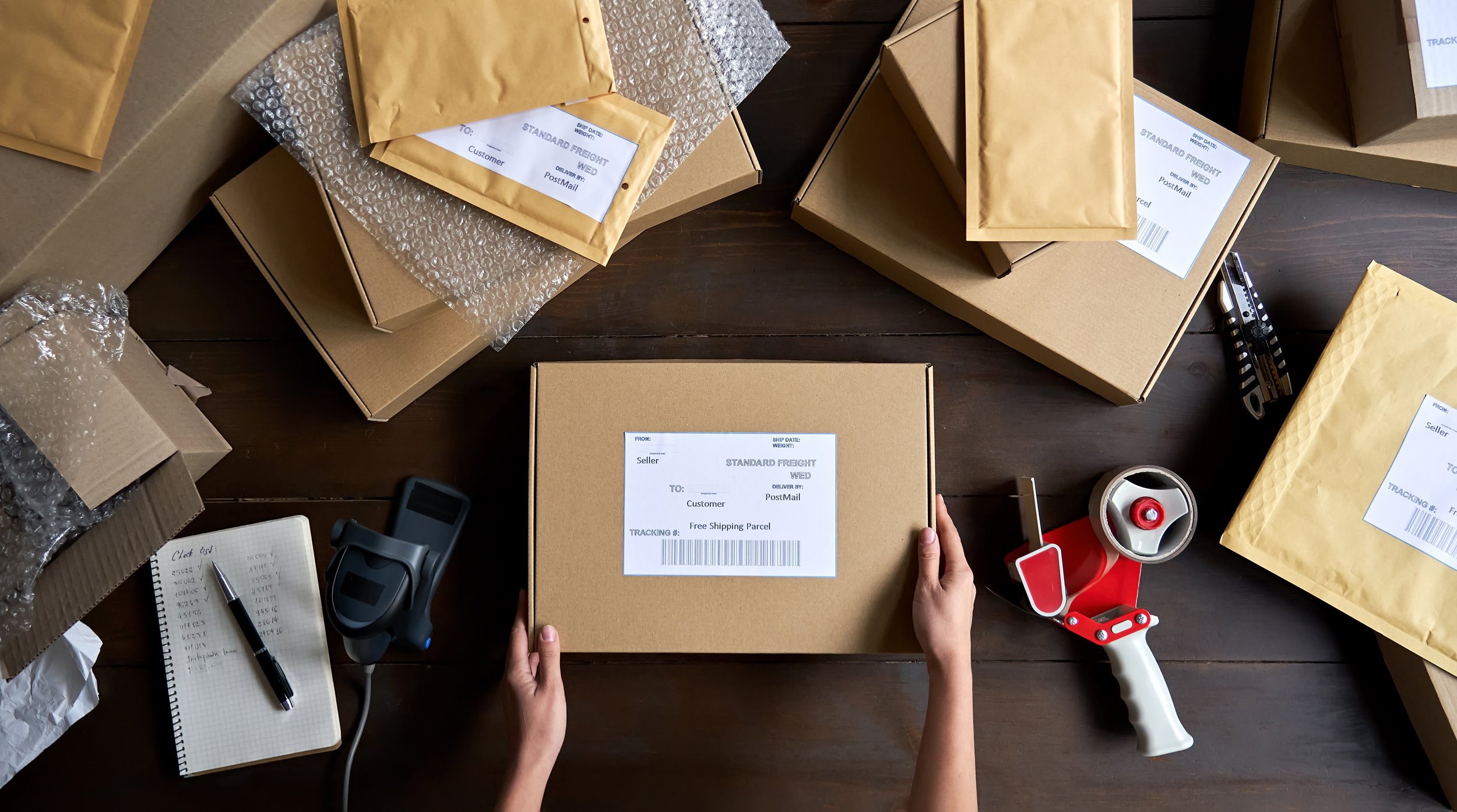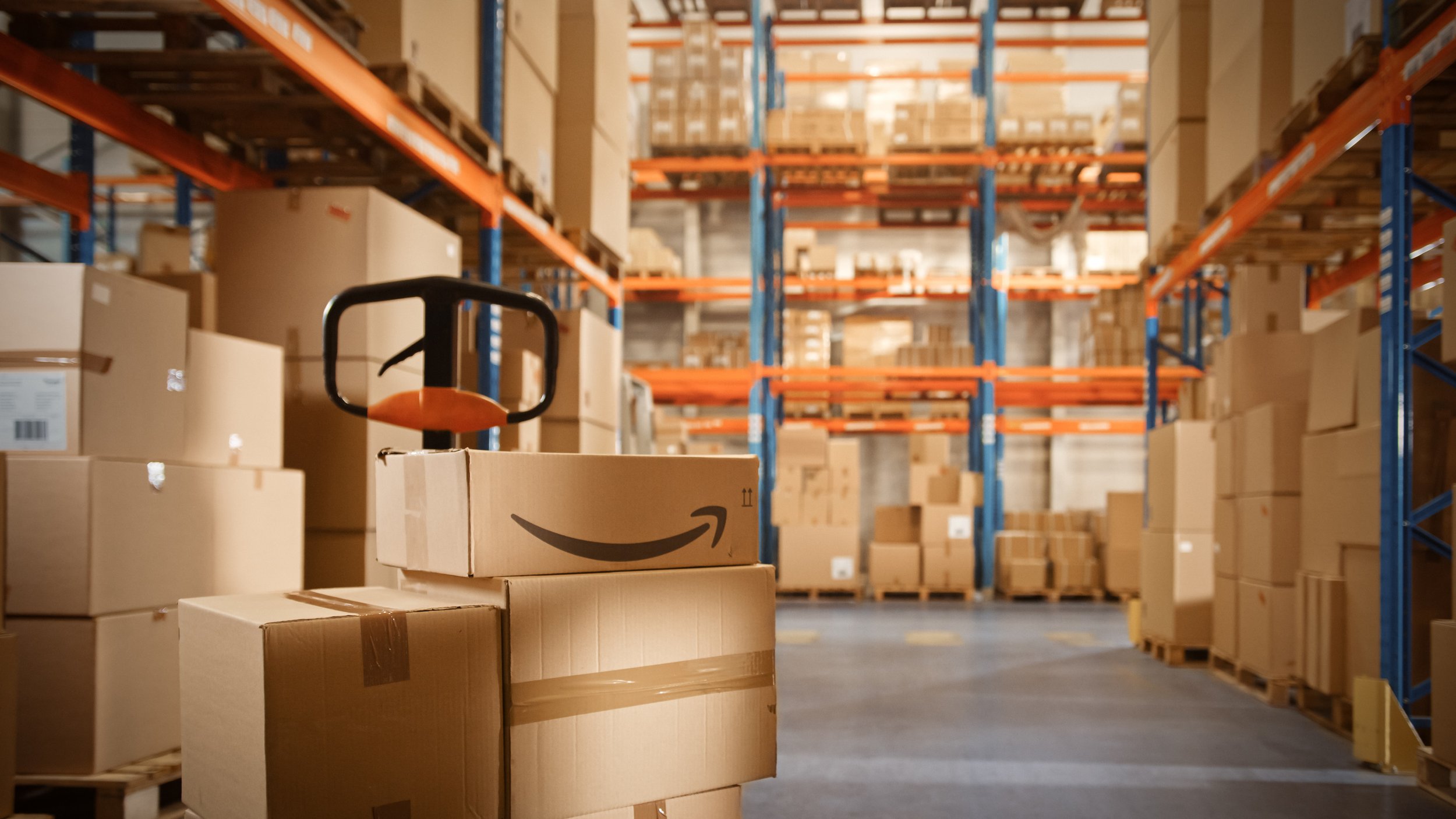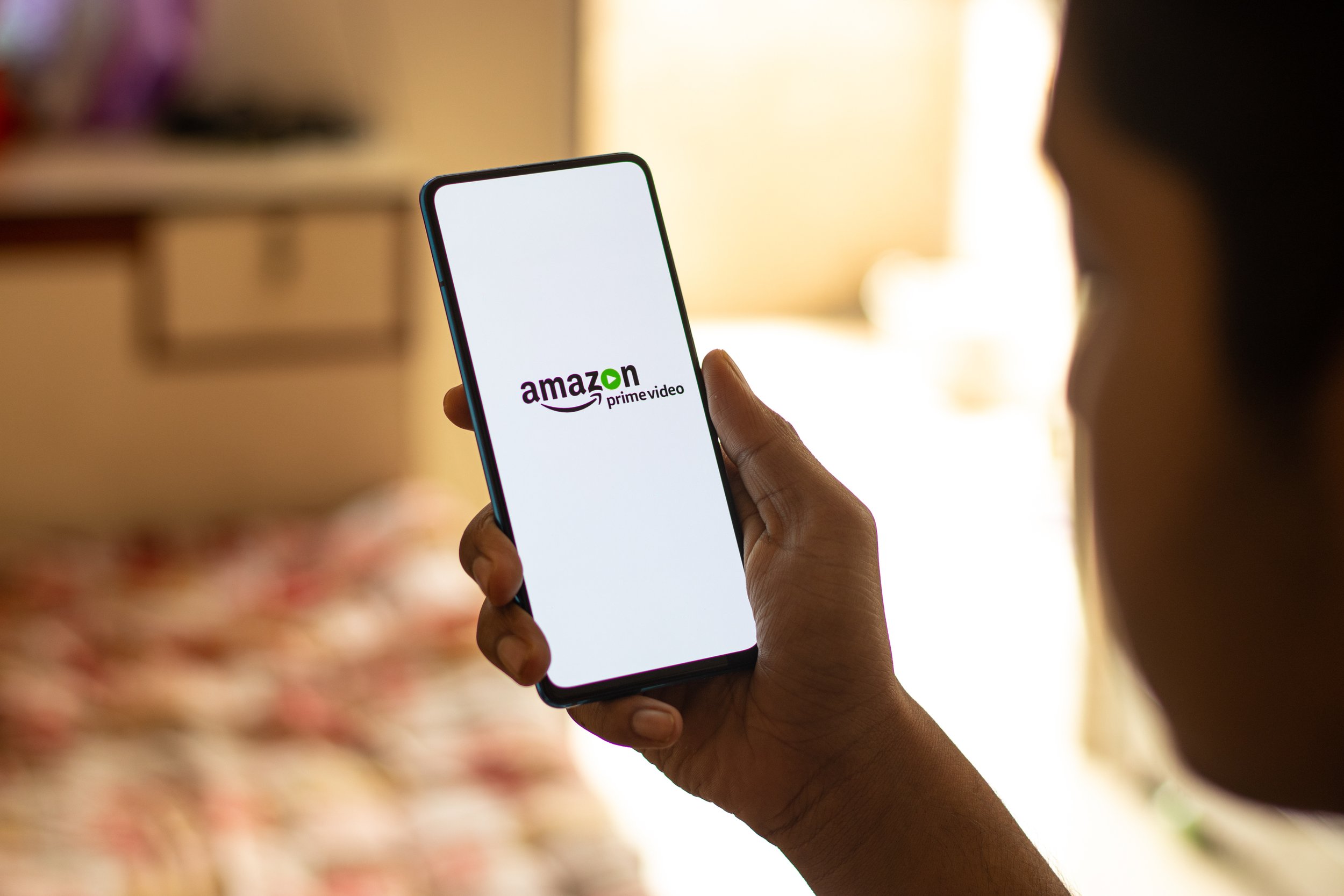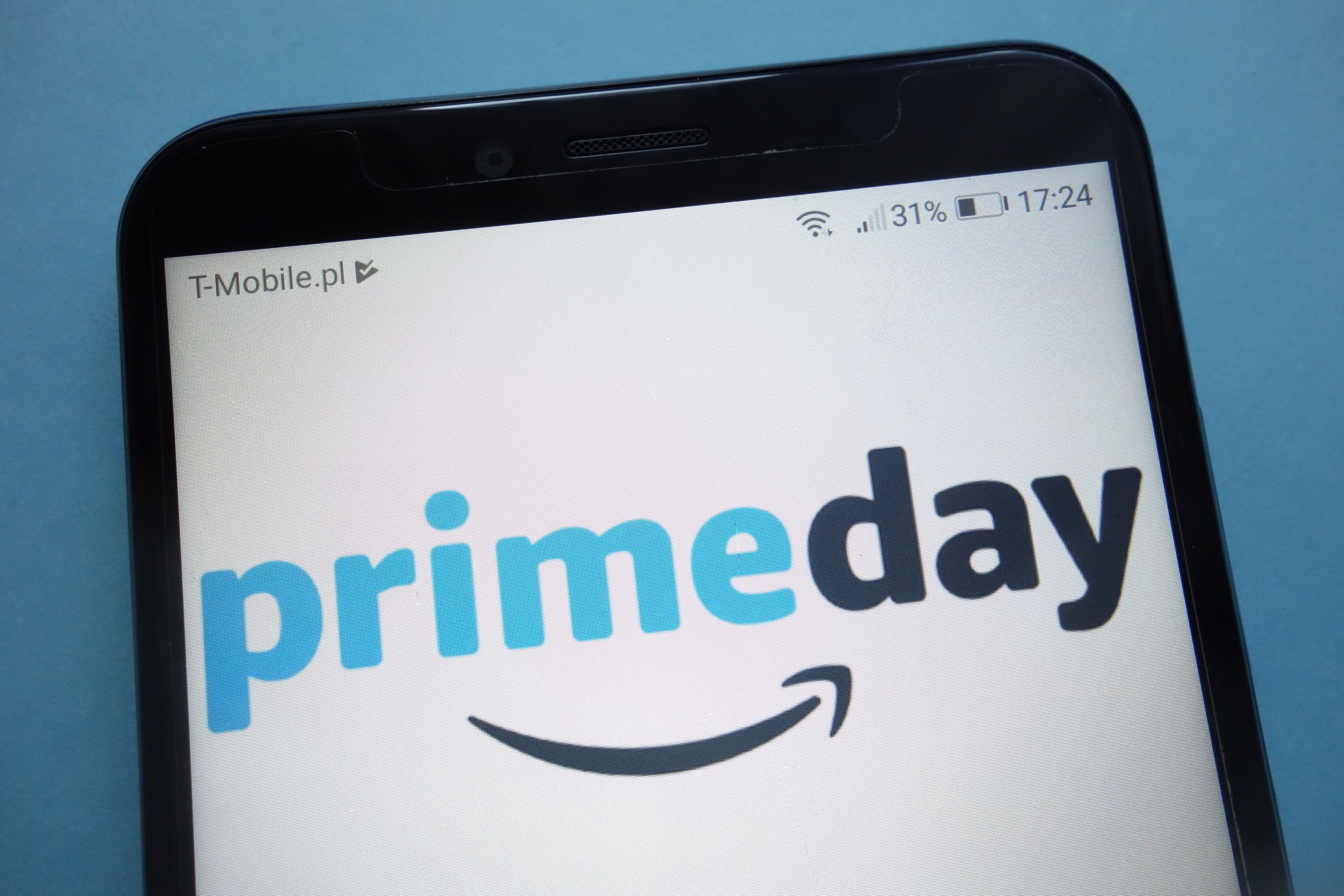The Essential Guide to Scaling Your E-commerce Business Successfully
In today's digital landscape, e-commerce has emerged as a powerful avenue for business growth. However, as your e-commerce business gains traction, scaling becomes imperative for sustained success. Scaling an e-commerce venture involves strategic planning, operational efficiency, and a keen understanding of market dynamics. In this article, we'll delve into actionable strategies to help business owners navigate the complexities of scaling their e-commerce operations effectively.
1. Establish a Solid Foundation:
Before embarking on your journey, make sure that your e-commerce business has a solid foundation in place. This includes:
- A robust and user-friendly website optimized for easy purchasing from your customers. Having a website that’s easy to navigate will allow the customer to find what they want easily without getting frustrated.
- Reliable e-commerce software and infrastructure capable of handling increased traffic and transactions. You don’t want software errors and your servers crashing getting in the way of your customers.
- Clear branding, messaging, and value proposition to differentiate your business in the market. Think about questions such as, what makes your business different? Why shop at my business rather then somewhere else?
- Seamless integration of payment gateways and logistics solutions for smooth order processing and fulfillment. Working with Thor & Company we will help you find the right solutions to your logistical needs.
2. Customer Experience:
As you scale your e-commerce business, prioritize delivering exceptional customer experiences. This involves:
- Implementing responsive customer support channels to address queries and concerns promptly.
- Streamlining the checkout process to minimize friction and cart abandonment. You want as few clicks as possible between your customer and them buying your product. You will lose momentum the more clicks the customer has to do to purchase your products.
- Getting feedback from your customers will help you identify areas for improvement and help tailor your products.
3. Leverage Data and Analytics:
Harness the power of data and analytics to drive informed decision-making and optimize business performance:
- Utilize web analytics tools to track key metrics such as website traffic, conversion rates, and customer demographics.
- Implement data-driven marketing strategies based on customer behavior and purchase patterns. Pay attention to your customers needs, wants and buying habits. Use what you learn from your sales reporting to create your marking strategies.
- Employ predictive analytics to forecast demand, manage inventory effectively, and prevent going out of stock.
4. Invest in Scalable Technology Solutions and Outsourcing:
Invest in scalable technology solutions that can adapt to the evolving needs of your growing e-commerce business:
- Thor & Company will help you manage your growing e-commerce business so that you can focus on other areas of your business. From logistics to sales reporting we will save you time and money as your business grows.
- Explore cloud-based e-commerce platforms that offer flexibility, scalability, and advanced features to support expansion.
5. Expand Your Marketing Efforts:
Expand your marketing efforts to reach a broader audience and drive sustainable growth:
- Diversify your marketing channels beyond traditional avenues to include social media, influencer marketing, email campaigns, and search engine optimization (SEO). “The medium is the message.” It’s important to think about where your customer base is. Are they primarily on Tiktok? On Amazon? Or some other platform?
- Develop compelling content such as blog posts, videos, and infographics to engage and educate your target audience. Building a relationship with your customer base is a great way to build a loyal following. Telling your story, giving guides on how best to use your products, etc. can be good ways to build your relationship with your customers.
- Collaborate with complementary brands, influencers, and affiliates to amplify your reach and attract new customers. Thor & Company can help you find influencers that are the right fit for your business.
6. Build a Scalable Supply Chain:
Building a scalable supply chain is important for meeting growing demand and ensuring timely order fulfillment:
- Establish strategic partnerships with reliable suppliers and manufacturers to secure a steady supply of inventory.
- Explore options for warehousing and fulfillment, such as third-party logistics (3PL) providers, to scale operations efficiently.
Scaling an e-commerce business requires careful planning, execution, and continuous adaptation to market changes. You can overcome challenges in order to navigate the complexities of scaling successfully and unlock new opportunities for growth in the competitive e-commerce landscape. To scale your business, continually iterate and innovate to stay ahead of the curve in the ever-evolving e-commerce ecosystem.
If you’d like more information, contact us today. We’ll do our best to answer any questions you have. If you’d like, we’ll give you a free quote.
The Solid Presence of TikTok in the US: Why a Ban is Unlikely
TikTok, the super popular short-form video platform, is in the middle of a controversy in the United States. However, despite the challenges, a ban on TikTok in the U.S. seems increasingly unlikely. Here's why:
1. Legal Battles and Resilience:
TikTok has been involved in heavy legal battles around data privacy and national security concerns. Yet, the platform has demonstrated unflinching resilience by addressing these issues directly. Through strategic partnerships and legal moves, TikTok has demonstrated a commitment to complying with U.S. regulatory standards, which lessens the likelihood of a ban. The issue of data privacy is not only a TikTok problem, but a problem across all platforms.
2. User Base and Cultural Impact:
TikTok has become deeply ingrained into American culture. The platform has millions of active users in the US alone. It serves as a platform for creativity and connection, resonating with users across demographics. The size and engagement of its massive user base make it a formidable presence, making a ban a challenging proposition.
3. Economic Contributions:
TikTok's operations are so large in the U.S., it has a significant impact on the economy. The platform provides opportunities for content creators, generates revenue through advertising, helps businesses build their brands, and fosters entrepreneurship through its creator ecosystem and partnerships. A ban on TikTok would not only disrupt these economic contributions but it would also impact the broader landscape of digital and social commerce.
4. User Support and Advocacy:
TikTok has widespread support from its user community, who have rallied behind the platform amid regulatory challenges. Advocacy efforts from users, influencers, and businesses have been outspoken about the positive impact TikTok has had. This support adds a powerful voice to the conversation, making it difficult for regulators to enact a ban without significant backlash. A ban on TikTok could mean bans on other platforms. It also has implications of infringing on the rights of free speech. These factors reduce the likelihood of a ban.
5. International Precedents:
Bans on popular social media platforms in other countries have proven to be complicated and challenging. Enforcing a platform ban is difficult to enforce. Legal hurdles, technical limitations, and backlash from users are some of the challenges with banning a platform like TikTok. These experiences serve as cautionary examples for regulators thinking about a ban on TikTok in the US.
Conclusion:
While TikTok may continue to navigate scrutiny over privacy concerns and legal battles, a ban on the platform in the US appears increasingly unlikely. Its resilience, enormous loyal user base, economic contributions, user support, and international precedents all point towards TikTok maintaining its presence and influence in the digital landscape of America. As it evolves, TikTok is a vibrant platform for creativity, connection, expression, and entrepreneurship poised to endure.
Amazon Compliance Tips You Need to Know
Amazon has strict policies about making claims about your products. If your product makes claims that have not been FDA approved Amazon will not accept your product. For products like supplements, we recommend reviewing not only the Amazon policies, but FDA regulations as well.
Amazon has strict policies about making claims about your products.
If your product makes claims that have not been FDA approved Amazon will not accept your product. For products like supplements, we recommend reviewing not only the Amazon policies, but FDA regulations as well. In some cases, Amazon can be more strict than the FDA. Amazon may remove your product listing because it has the term, “FDA” in your listing descriptions. Amazon uses bots to scan listings for trigger words like “FDA”, or “cures”. If your listing is removed, you will have to make the case that you have not violated any policies or that your products are legitimate.
What happens if I violate a compliance policy?
The actions Amazon takes depend on the violation, your account standing and how many listings have violations. In some cases, you may just be issued a warning and be asked to discontinue the current behavior. But, in other cases you will be issued a policy violation. Amazon will give you general instructions on how to address the violations. Sometimes, Amazon won’t tell you exactly what the violation is, so you have to figure it out and change it as soon as you can. Too many policy violations could lead to account termination. Policy violations will stay on your account until they are addressed.
What claims can I make?
We recommend keeping your product descriptions very general and accurate. Any claims you make, including ecological or organic, have to be verified. For example, if you are selling clothing made from a sustainable source, you have to be able to provide documentation. Keep in mind that it’s easier to create a listing with general descriptive words and avoid making specific claims. You don’t want to make the claims and need to negotiate getting them relisted, or worse, try to get your whole account reinstated.
Thanks for reading and if you’d like more information, contact us.
Amazon Store Design Tips
An Amazon store is available to Brand Owners. Businesses can create a home page with additional pages and sections.
An Amazon store is available to Brand Owners. Businesses can create a home page with additional pages and sections. Along with your storefront, you’ll have access to traffic and sales data. This data will show sources of traffic and what they are purchasing. Here are 5 tips for designing a successful Amazon store.
1. Clarity
When setting up your pages, along with images, you can add text only blocks. You can share your company’s story and deliver clear messaging to your customers about your brand. Tell your customers about yourself in a way that is clear and engaging. Much like a website, your Amazon store is a place to share what your company is about along with your products.
We recommend having a common element in each page for continuity. For example, you can include your tagline in a text block on each page with your logo. It’s a great opportunity for brand building and brand recognition.
2. Easy Store Page Navigation
Have a clear menu. Divide your products into a clear catalog that your customers will be able to understand. Having a clear layout will reduce confusion and frustration among your customers. The more clear the menu is, the easier it will be for your customers to buy.
3. High Quality Images
Make sure they’re clear, high quality and appropriate. Amazon image requirements are meant to help you design a store that shows your products in the best light. Your images have to include the products, not only be about style. The quality of your product photography should be higher resolution, not blurred. The higher the quality images, the more likely your customers will buy. We recommend you have at least five pictures of each product on your homepage.
4. Make Products Easy to Buy
Shoppable images. You can include shoppable images, where you can have multiple products in one image. When your customers click on a product they’re interested in, it opens the product listing. This helps minimize the amount of clicks for customers which can increase the likelihood of a purchase.
5. Keep Your Store Updated
Customers will lose patience if they see out of stock items featured in your store. Remove out of stock items. Update seasonal products if needed. No one's gonna buy a Christmas sweater in June. If your company changes the tagline or marketing messaging, remember to update your Amazon store too. If you have holiday images, change them out when the season is over.
Thanks for reading and if you’d like more information, contact us.
Amazon Returns
You will be processing refunds when you get them, and you’ll want to be able to get it done quickly for better customer service.
As part of your seller account health metrics, returns play an important role in determining customer satisfaction. If your return rate is too high, you run the risk of having your account removed. A low return rate demonstrates your brand’s ability to provide quality products and customer service.
How Amazon processes Fulfilled by Amazon, FBA returns.
When a customer returns a product that you’re selling FBA, the whole process can be fully automated. However, it’s a good idea to keep an eye on the number of returns. Amazon counts returns against your account health. It’s also a sign your product may have quality issues you need to address as soon as possible.
When a customer sends a return back to Amazon, workers will determine if it’s alright to be put back into storage. If it’s damaged or defective, it will be destroyed. The customer will be automatically refunded unless you want to process each one individually. If you’re selling higher volumes, this may be impractical. You can always message a customer through their order or return on Amazon.
How Amazon processes Fulfilled by Merchant, FBM returns.
With FBM returns, you can process the return yourself, giving them information specific to the situation. You will need a return address so customers know where to ship returns. The product return label will be sent to the return address you have added into your store account. When you receive the item, you can process the refund. You will always have the option of giving them a partial or full refund depending on the circumstances. You can also contact the buyer through the returns section or the order on Amazon.
Where to send FBM product returns.
You’ll want to make sure the address customers send returns to is convenient for you. You will be processing refunds when you get them, and you’ll want to be able to get it done quickly for better customer service. Make sure you have a place to store returned items and a way to dispose of them if necessary.
Thanks for reading and if you’d like more information, contact us.
Amazon Fees
We always tell people Amazon will take about 25% off the top, so you’ll want to make sure your margins can cover the costs.
We always tell people Amazon will take about 25% off the top, so you’ll want to make sure your margins can cover the costs. Amazon has been increasing fees regularly for the past several years.
The professional account plan is $39.99 per month.
Referral Fees
Amazon has something called a referral fee. This fee is a percentage of the total sale price of the item. It varies by item but most products will be in the range of 15%.
Fulfillment Fees
There are other fees associated with selling FBA. These fees will depend on your specific products and other Amazon criteria. Fees you can expect to see include storage, returns, Subscribe & Save, and other fees.
The fulfillment fees, which are basically handling fees, are based on the weight and size of your product. You’ll find specifics about fees for your products in seller information on Amazon.
Advertising Fees
Ad fees will depend on your budget. Most advertising is cost per click and you can set a daily budget for campaigns. You will need to allocate specific amounts to specific keywords and any time someone’s search includes one of your keywords they might see your ad. If the customer clicks on your ad it will use funds from the daily budget. For example, you could have a budget of $10 per day and set the campaign to run for 2 months.
If your daily budget runs out, it will stop showing your ad, and if you have any of the daily budget left over, it will add the remaining to the next day.
Summary
As a general rule, you will want to make sure you can sell at least 40 items per month and you have a margin of at least 40% to cover Amazon fees. There are costs and fees to selling on the biggest online marketplace in the world. But with planning and knowledge, you can build your brand, expand your reach, and successfully grow your business.
Thanks for reading and if you’d like more information, contact us.
Your Amazon Account Health
Amazon monitors your seller account performance in Account Health metrics. Amazon gives you an overall account health rating. Your account health can be affected by several metrics. If your account health rating is too low, it puts you at risk for account deactivation.
What is Amazon Account Health?
Amazon monitors your seller account performance in Account Health metrics. Amazon gives you an overall account health rating. Your account health can be affected by several metrics. If your account health rating is too low, it puts you at risk for account deactivation.
Customer Service Performance
The order defect rate should be under 1% for a health account. The rating is a rolling 60 days. If you have an order defect that means a customer left negative feedback, an undenied claim or a credit card chargeback. It is part of a measure of the ability to provide the customer with a positive experience.
Policy Compliance
Amazon has strict policies that all sellers must comply with. There is a wide range of policies, including customer complaints, listing violations and intellectual property complaints. Make sure you understand all Amazon policies to avoid any costly mistakes.
Shipping Performance
Not shipping orders on time can affect your account health. You also must provide customers with valid tracking numbers when you’re selling FBM. If your shipping performance rate targets are too low, you can improve them by reducing shipping times and providing more accurate shipping.
Thanks for reading and if you’d like more information, contact us.
Understanding FBA and FBM
Many sellers find using a combination of FBA and FBM to be beneficial. This allows you to optimize customer experience and have greater control over your inventory.
FBA
Fulfillment by Amazon, FBA, is a storage, picking and shipping service provided by Amazon. The downside to FBA is that FBA is more costly than FBM. You don’t have control over where your products are stored. Products are shipped to and stored in Amazon warehouses all over the country. Often, a shipment of your inventory will be divided and stored in multiple locations, making it difficult to understand where each item is.
There are many benefits to using FBA for your business to take advantage of. It opens up opportunities for many businesses that can’t ship themselves. Amazon will take care of storage for you. They will also make sure your products are optimally distributed for fast delivery for higher customer satisfaction. They can package your products for you for an additional fee if you don’t have the resources to do it yourself. The product listing will display “fulfilled by Amazon”, increasing customer trust and boosting sales. Your products will be available for prime shipping when you use FBA. Prime members will be incentivized to buy with fast, free shipping through FBA.
FBM
Fulfillment by Merchant, FBM, is what it’s called when you sell your items on the Amazon platform, while storing, picking and shipping items yourself. You will have to store and ship your own products. You’ll have to print your own shipping labels. Your products won’t be available for prime shipping unless Amazon invites you to the program. If you don’t ship your products within a day or two, Amazon will count this against you, damaging your account health. FBM is not available for the Subscribe & Save program.
There are some substantial upsides to selling FBM. Your fees will be far lower without having to pay fulfillment fees. You will have more control over how and where your products are stored. FBM is just more straightforward, giving you more control in your inventory management. Sometimes Amazon restricts certain ingredients or products from being stored in their warehouses, making it impossible to sell FBA. Using FBM gives you the opportunity to sell certain products in your line regardless of any Amazon storage challenges.
Using a Combination
Many sellers find using a combination of FBA and FBM to be beneficial. This allows you to optimize customer experience and have greater control over your inventory. Some products may have ingredients that would be best controlled in your own storage space, while other products of yours are easily shipped to Amazon for storage. With FBA and FBM options, you can choose how your products are sold through Amazon most effectively and efficiently.
Thanks for reading and if you’d like more information, contact us.
Packaging Tips for Selling on Amazon FBA
Amazon has packaging requirements for selling FBA. Depending on your type of product, Amazon will require that you send to FBA in specific types of packaging.
Amazon has packaging requirements for selling FBA. Depending on your type of product, Amazon will require that you send to FBA in specific types of packaging. These requirements are in place to protect your products during handling in their warehouses and throughout the shipping process.
Amazon will charge extra if the items are not packaged properly. For example, it can cost almost $2 per item for Amazon to individually wrap small glass bottles in bubble wrap for you. It’ll likely be much cheaper to wrap the bottles yourself instead of having Amazon do it.
Amazon has requirements for the types of plastic you can use in your packaging. For example, if you happen to use plastic in your packaging, Amazon requires you to have specific thicknesses for that packaging. It has to be thick enough to withstand getting picked up and transported in and between warehouses, in vehicles, and on conveyor belts.
Glass bottles need more protective packaging. Glass bottles have a tendency to break during shipping so you should protect the glass with the proper packaging. You can protect your glass bottles with packing material and bubble wrap. You should wrap each individual bottle in enough material to protect it during transport.
Inventory sent to Amazon fulfillment gets divided and shipped to different locations, so each item needs its own packaging. If you ship a box with individual items, make sure each one is ready to be sent individually to different locations.
Amazon has requirements for labels too. Individual products need “branding” or permanent labels attached for selling FBA. If you are a brand owner, you’ll need to have a label fixed to the item and on the outside of the packaging. The labels should have your logo on them. Each product should be easily identifiable as your brand.
Another requirement for individual items is a barcode. Amazon uses scanners and computer inventory software to track all the inventory moving through all of their fulfillment locations. Each item has to have its own UPC or barcode. This is a requirement for items and for the packaging so they can track it through warehouses.
Amazon has to approve your branded packaging before you send your products to Amazon for the first time. You’ll need to upload a picture of your branded packaging as part of the Brand Registry application process.
Thanks for reading and if you’d like more information, contact us.
Why Selling on Amazon is Good for Your Business
Amazon is the largest shopping platform online. You have access to a large market that you might not have if you were selling on other online platforms or in a physical store. Amazon has over 200 million prime members.
Amazon is the largest shopping platform online.
You have access to a large market that you might not have if you were selling on other online platforms or in a physical store. Amazon has over 200 million prime members. The access to such a large customer base can allow your business to grow faster and at a much larger scale. You can drive traffic to your Amazon store through your website, giving your customers more purchasing options.
You can expand your reach, even sell globally.
Amazon gives you a simple way of selling to other parts of the US or even other countries. It allows you to be visible to demographics and markets outside of your immediate area. You can also reach other businesses with Amazon Business. You may even qualify to become a vendor and sell to Amazon.
People want to shop on Amazon.
Amazon is the way millions of people want to shop. Amazon has millions of prime members and millions of customers. When the pandemic hit, people went shopping on Amazon. Amazon is there when people need a quick order or when they want to buy something they can’t get at their local store. Your business can benefit by the increased reach on the global platform where people shop from home.
Amazon offers people opportunities to give.
We often think of Amazon as a huge corporation. It may make you feel better to remember that when people shop on Amazon, they can choose to donate to charities. It’s a giving platform too. Buyers can sign up for AmazonSmile and support charities for free. They can also donate products from the AmazonSmile Charity Lists. This may not help your business directly unless your business is a charity, but it feels good.
Thanks for reading and if you’d like more information, contact us.
Amazon Prime Day
Prime Day is one of the biggest selling times of the year on Amazon and the biggest sale event of the year. It’s 48 hours of prime member deals.
When is Prime Day 2022?
As of the writing of this article, mid May, the date hasn’t been announced yet. It’s rumored to be in July, likely the 18th and 19th.
What is Prime Day?
“More than 250 million items were purchased by Prime members worldwide.” Amazon. (2021, June 23). Prime Day Delivered the Two Biggest Days Ever for Small & Medium-Sized Businesses in Amazon’s Stores Worldwide, Growing Even More than Amazon Retail, and Members Saved More than Any Previous Prime Day. [Press release]. https://press.aboutamazon.com/news-releases/news-release-details/prime-day-delivered-two-biggest-days-ever-small-medium-sized
Prime Day is one of the biggest selling times of the year on Amazon and the biggest sale event of the year. It’s 48 hours of prime member deals. This includes flash sales, coupons, and about 20% off of tons of items. Amazon encourages sellers to discount products during Prime Day to take advantage of the additional traffic on Amazon. It’s become an important shopping day, similar to the Christmas season for buyers.
As a seller, you can choose to opt in or out of Prime Day. In previous years if you opt in, the discount was a minimum of 20% off your entire product line. Not all products are eligible. Check your Amazon account to see what products qualify.
How do I prepare for Prime Day?
Plan on an increase in sales, so if you’re selling FBA, make sure you have enough inventory to cover the increase in sales. For FBA, you should send inventory two months in advance.
In the week or two prior to the big event, many businesses benefit from ramping up advertising. Prime members are getting ready to shop and it’s a perfect time to expand your reach, increasing new to brand customers.
What do I do after Prime Day?
In previous years, Prime Day discounts were in effect for 48 hours. Buyers are still shopping after Prime Day is over. It’s still a great opportunity to increase awareness of your brand. Advertising for the two weeks prior to Prime Day and one week after will maximize your exposure to new customers while reinforcing your brand with current customers.
Thanks for reading and if you’d like more information, contact us.
Only you should control your brand registry on Amazon.
Only you should control your brand registry on Amazon. Here’s why...
Handing over control of your Brand Registry account on Amazon is a big decision. Make sure
you set your account up in the best way for your unique company. There are pitfalls you’ll want to avoid. Before you authorize another company to sell your products for you on Amazon, there are a few things to consider.
If a 3rd party has their name on your Brand Registry account, you’ll be giving someone else
control over your brand on the world’s largest selling platform. Amazon rewards sellers for setting up their Brand Registry because they want to weed out unauthorized sellers. It may be your brand name, but the seller is the 3rd party. The account belongs to them. You can think of them as basically a distributor. They can make changes to the listings, add account users without your knowledge, gather your sales data, collect customer demographics, delete or add products, use your marketing copy and
more. When someone else is selling your products through Amazon, your company forgoes the customer feedback. All the stars ratings are in the account selling the products. They get your stars, not your company. The Brand Registry benefits Brand Owners enjoy are within an account you won’t have access to.
Your Brand Registry seller account is the center for your customer data, sales information, your listings, your content, and your Amazon store. You can only see the data they give you since you can’t log in to their account.
They can invite as many authorized users as they like. Authorized users can change your listing information, see your customer data and everything in your account. This can be a potential security concern. Amazon doesn’t vet any authorized users added by the controller of the account. You could, and probably will, wind up with people attached to the account selling your products that you haven’t personally approved.
If you ever want to take back your account and bring Amazon selling within your company, you have to set up another seller account. This is a complex topic, but here are a few issues that come up:
• Amazon wants companies to set up one seller account, so you’ll be negotiating with Amazon
customer support, trying to prove you are the Brand Owner.
• The process of getting your Brand Registry account set up after another company has been selling
your products takes more time and energy than setting it up for yourself in the first place.
• The company controlling your inventory has to sell out of your products or ship it back to you,
which can take months.
• The 3rd party has to agree to the transition.
• Once a seller has authorization, it’s not always easy to remove the authorization as the seller under
the Brand Registry.
• You will lose the product reviews and have to start over.
• You won’t have any seller feedback either, since you weren’t the seller.
Making the decision to sell on Amazon is a big decision. Protect your brand on Amazon by
keeping control of your brand registry. It’s best for your company in the long run to stay in control by either managing your Amazon account within your company, or work with an agency that will allow you to retain control of your brand on Amazon.
With Thor & Co, you have the option to keep control and ownership of your Brand Registry. You have full access all the time. We may offer to buy wholesale, but we will always uphold transparency for your peace of mind. We do the work.
Thanks for reading and if you’d like more information, contact us.
Your 2022 Brand Registry Benefits on Amazon
Getting your official Brand Registry on Amazon has many benefits that make it worth the additional effort to sign up.
Getting your official Brand Registry on Amazon has many benefits that make it worth the additional effort to sign up. Having your Brand Registry can mean an increase in sales by at least 10% with the added listing options alone. There are also advertising opportunities that could result in ramping up your brand awareness and sales revenue both on and off Amazon. Registered brand owners also have access to powerful analytics and sales data.
Be aware, many of these tools are only available to you if you control your brand registry account and not a 3rd party. If your Brand Registry account is in another company’s name, you don’t have the control or access you’re entitled to.
Brand protection.
Reporting violations is done through your brand registry account. If you find a seller offering a counterfeit product version of your product, you can report them and have them removed. A 3rd party seller can report unauthorized resellers on behalf of your brand, but you won’t know about it unless the 3rd party seller notifies you of what’s happening.
Project zero is Amazon’s total support program they offer to get counterfeit products down to zero. Only Registered Brand Owners that have had problems with fraudulent competitors can participate. It’s the next level in protecting your brand on Amazon.
Content control.
Accuracy and control of your product descriptions are critical to building your business. As the Brand Owner, you have the priority if another seller tries to change anything on the listing. If another party has ownership of your Brand Registry account, make sure they have added the correct information and they are adding any changes when you request them.
Product listings, A+ Content and Premium A+ Content.
The product and brand descriptions are another brand building opportunity. Customers are more likely to buy and less likely to return the product. This translates to more positive reviews and a lower return rate. Images and additional descriptions also help with Google search results. According to Amazon, sales are about 10% higher for listings with A+ Content.
Personalized store.
You can create a sophisticated store on Amazon, showcasing your products and telling your brand’s story. You can create featured product pages, changing them out seasonally, for example. You can add video, text, and more product images. Your store can have categories and nested pages for displaying your product line to customers.
Custom tags for sharing.
Amazon has a tool you can use to create custom URLs that will track clicks. It’s free through your store and you can create and share as many links as you like. The tracking information will help you understand the performance of your campaigns. If you share your link on Instagram, for example, you will see the data, including clicks and conversion rate.
Brand analytics.
As a Registered Brand Owner, you have access to an enormous amount of keyword and sales data for your products and other brands on Amazon. This can be valuable information for your marketing and advertising on and off of Amazon. Customer demographics, search terms, competing product information, trending sales data are all available in your account.
More advertising options.
Sponsored Brands ads are only available to Registered Brand Owners. You can see new-to-brand metrics to gauge how many new customers you have. Sponsored Brands generally have a higher return rate. They also have a lot of customization options and appear in various places, including top of search, product detail pages, and within search results.
Thanks for reading and if you have any questions, feel free to contact us.
How to find Key Performance Indicators – KPIs for ad campaigns in Amazon
Before we dive in, you need to know most advertising reports are only available for the previous 90 days. It’s a good idea to run reports regularly so you don’t have gaps in the data.
There are a few places to find metrics and reports in your Amazon account, and you can look in the main drop-down menu. You can find most reports in “Reports,” but there are also inventory reports in “Inventory,” order reports in “Orders,” and others in your “Brand Dashboard” under “Brands.”
Advertising Reports
Find advertising reports either by clicking on “Advertising Reports” under “Reports” in the main menu, OR from the advertising section (amazonads), under “Measurement & Reporting” -> “Reports.”
There you’ll see an unassuming button that says “Create Report.” That takes you finally to the ad reporting page. You have a lot of options in the drop downs. Choose the ad type you want data on and the type. You may have to run several reports to find the specific data you’re looking for because the descriptions are brief.
Be aware that the advertising reports only show data for products that were advertised, not other products. The advertising data will be different from the overall data. It’s not always obvious which report is which, especially when you’re sifting through data from several spreadsheets at one time. It’s good to stay organized and keep the ad reports separate. Rename them once you’ve downloaded them to help keep it all straight.
There are at least 9 different kinds of reports you can run, just for Sponsored Products campaigns alone. Have your metrics and KPIs in mind before you start gathering reports.
Automatic traffic validation.
Amazon automatically removes clicks that aren’t real, meaning Amazon software analyzes clicks to determine the validity. Any clicks that look like they’re generated by machines or invalid in some way are removed. It is a way Amazon tries to protect sellers from illegitimate clicks.
Basic Ad Performance Metrics
Sales – Sales of advertised products. This doesn’t include sales from other sources.
Conversions – How many sales per visits to the product page through the ads.
ROAS – Return on ad spend. Sales/Ad spend. The rate you’re generating revenue through ads with what you’re spending.
ACOS – Advertising cost of sales. Ad spend/Sales. The inverse of ROAS, it’s the rate you’re spending to make sales.
CPC – Cost per click. The average cost when customers click on your ads.
CTR – Click through rate. The rate people are clicking on ads.
I hope you found this helpful and if you’d like more info, contact us at hello@thorandcompany.com
Cracking UPCs for Amazon
Why you need barcodes to sell on Amazon
Universal Product Codes, or UPCs, tends to be a confusing topic for Amazon sellers. And with good reason. There are many layers to product identification codes, but here are the basics you need to know.
Each of your products need to be identifiable to be sold on Amazon. Amazon requires UPCs just like most stores that are selling your products. Amazon requires a unique identifying number for products on their platform. When setting up a listing, you are adding a product to the Amazon catalog. Amazon requires that you enter either a GTIN or EAN or a UPC. In our experience, Amazon prefers UPCs when setting up a new product.
When you purchase a UPC, it will include the GTIN versions. GTIN stands for Global Trade Identification Number and is the broad term for all product code numbers. A barcode is an image version of the code. Scanners use the barcode to access information about it, such as color, size, and your company name. Barcodes are the same as UPC codes, but not all barcodes are UPCs. You can have a GTIN barcode, for example.
Why do I need a UPC when amazon assigns each product their own ASIN?
The different numbers, including SKUs, UPCs, ASINs are all product tracking numbers, but they have different uses. ASINs are Amazon’s internal tracking numbers automatically assigned to products added to the catalog. UPCs can be used everywhere, and are also used in Amazon. SKUs are a company’s internal number, but also used in Amazon for tracking. Using several identifying numbers is also a backup system in case workers can’t get one number, they have other identifiers.
Each individual product must have one. This means if you have variations, like sizes, each variation must have its own UPC. UPCs also help protect your brand and products from fraud by carrying your company data, which is also, in the GS1 database. Amazon now requires UPCs that are in the GS1 database. That means you must purchase them through GS1. GS1 barcodes are now required. Amazon checks the GS1 database for your product information.
The website for GS1 is gs1us.org
Helpful tips:
There is a lag time for amazon validation of the UPCs. When you buy your barcodes, you will be setting them up by adding product and company information to them, which can take quite a bit of time if you have a lot of products. It also takes a few days for the data connected to the barcodes to be completely available. Amazon won’t let you set up your listings until they have verified your UPC codes with GS1.
The codes must be in your name or your company’s name when you set up your Amazon listings. As a brand owner when you purchase the codes, you must enter your company information, which gets attached to the code and associated product.
Cost:
Currently, 10 GS1 barcodes are $250, the next tier jumps to 100 for $750. The next tier is 1,000 for $2,500. The prices are enough to stop some small businesses in their tracks and it’s a cost entrepreneurs should be aware of. The more you buy, the more you save, but it can be a barrier to entry for many businesses. There is also, an annual renewal fee of at least $50 depending on your pricing tier. If you only have a few products, you can get buy at first by purchasing GTINs instead of UPC codes. This can get you started, but you’ll have to get UPC codes later anyway. We recommend just adding the cost of UPC codes to your startup costs.
If you have any more questions, or if you would like to work with us, contact us at hello@thorandcompany.com
3 Ways to Increase Your Profits and Efficiency When Selling on Amazon
Amazon dominates ecommerce. In fact, it makes up about 38 percent of online retail sales (eMarketer, May 2020). Even small companies can get their products in front of millions of customers at a fraction of the marketing cost it would take outside of Amazon. But it has its challenges, as any Amazon seller can tell you. It can seem daunting if you are a new seller or you don’t have the additional resources it takes to manage everything Amazon.
3 of the most important decisions you can make are; whether to sell Fulfilled by Amazon (FBA) or Fulfilled by Merchant (FBM), how to handle the demands of selling on Amazon, and how to create ad campaign strategies and tactics.
Should I sell FBA or FBM?
Challenges
It is important to have a strategy for selling on Amazon and really weigh the options. While selling FBA is a great opportunity, there are things to be aware of for optimal profitability.
Selling FBA only can be very costly, which is especially challenging for small businesses. Often, sellers overlook selling FBM because it is time consuming to pack and ship orders in house. During the pandemic, many companies have downsized, making FBA seem even more attractive. However, selling FBM can increase margins and profitability in uncertain times. The savings when compared to selling FBA can be significant.
When a company sends their inventory to Amazon fulfillment to sell FBA, it becomes part of the Amazon system. If another company or reseller sells the same products as you do, all those products go into what is called a comingled bin. When Amazon fulfills an order, the product is pulled from the comingled bin. There is no guarantee the customer is getting one of the items you sent to Amazon fulfillment. This is usually not a big problem if the item is a book or something non-perishable, but it becomes an issue if you are concerned about counterfeit products or expiration dates. Controlling resellers, which is inevitable, is an ongoing issue for most Amazon sellers.
Amazon Support can be time consuming and frustrating. It can also be very difficult to reconcile inventory with a lot of accuracy. After your inventory is shipped to Amazon fulfillment, it is distributed to different locations. This means your products could be in a dozen different places around the country without your oversight or permission. Millions of sellers use FBA and it obviously works, but you may have reasons for wanting more control. Amazon has good tracking, but if a complication arises, it can take months to straighten out. Last year during the pandemic Amazon placed restrictions on selling products, so it may be a priority for you to have more control over your inventory availability.
Solution
Consider an FBA, FBM hybrid strategy. Selling FBA and FBM using a third party fulfillment center is often an efficient, cost effective solution.
Working with FBM and an independent fulfillment center gives you more control, efficiency, support and transparency. To maximize your efforts selling on Amazon, you want to be as efficient as possible. It is common for companies to offer customers the option of buying FBA or FBM to have more control over inventory levels. Some products are considered restricted on Amazon, in which case, a seller can use the FBM option. If you can’t sell through FBA, you can often list products through FBM.
COVID 19 and USPS disruptions have shown how vulnerable your process can be using FBA as your only channel. The hybrid approach allows you the flexibility, control and the higher margins you need to mitigate shipping disruptions.
How do I handle the demands of selling on Amazon?
Challenges
An Amazon account takes time and energy. Time sensitive issues can come up that require immediate attention. For example, when a customer contacts you, Amazon requires a response from you within 24 hours. Also, Amazon can remove listings for various reasons without notification, making it necessary to investigate and communicate with Amazon as soon as you can. Another example is the monitoring of reviews. If you receive a large number of reviews in a short period of time, Amazon may flag your listing and remove it for suspicious review activity. Some competitor black hat tactics involve posting a large number of reviews on your product to make it look like you paid for reviews, which is against Amazon policy. Monitoring reviews allows you to catch suspicious reviews, then contact Amazon to have them removed to avoid listing removal. Most businesses have a hard time keeping up with the demands of managing an Amazon account.
Solution
Use a dedicated team member(s) for Amazon management. Be sure to include training time. Another alternative is to outsource your account management. There are dozens of companies out there who can help you manage your seller account. We strongly advise retaining control over your Brand Registry. If you allow another company to set up your Brand Registry for you under their company name, Amazon recognizes the other company as the authorized brand owner. They are authorized to act on your company’s behalf. They control your brand on Amazon. There may be dozens of people with access to your Brand Registry Account and company information that you won’t know about. Later, if you want to take back control of your Brand Registry Account, it may take weeks for all of the users to be removed. It is a good idea to find out how they make their money. If they are buying product from you and selling on Amazon, it can be a conflict of interest if they have other clients competing in the same category.
T&C can free up your time and energy by managing your seller account for you. Your account is in your name, you keep control and T&C will take care of the day to day for you. Our fee structures are simple with no hidden fees. When choosing a seller account management service, make sure you understand what you are signing up for.
How do I create ad campaigns? What is my strategy?
Challenges
It is no small feat to coordinate inventory levels, seasonal products, holidays, ad campaigns, Amazon storefront management, along with the day-to-day operations, like order processing. It’s important to make sure you are coordinating campaigns and creative with seasonal products, logistics, inventory levels and events like Prime Day.
Solution
Be mindful of timing. In order to take advantage of seasonal highs, including Prime Day, ad campaigns should be coordinated on and off of Amazon. Aside from December, Prime Day is the highest sales season to prepare for. If you are selling FBA, you will want to make sure you have enough inventory to cover Prime Day. For FBA, inventory must be shipped early so that it will be processed and available several days before Prime Day with enough to cover several days after. Ad campaigns can be turned on during peak shopping times and turned off if you run low on inventory.
FBA works if you are comfortable letting Amazon handle your inventory. Selling FBM, you have the most control over your products. If your inventory is low, or you are not sure about inventory levels, you can prioritize where your products are shipped only with FBM. Just like Amazon ad campaigns, you can turn your FBM listings on and off whenever you want.
Amazon Ad Options
5 minutes







































